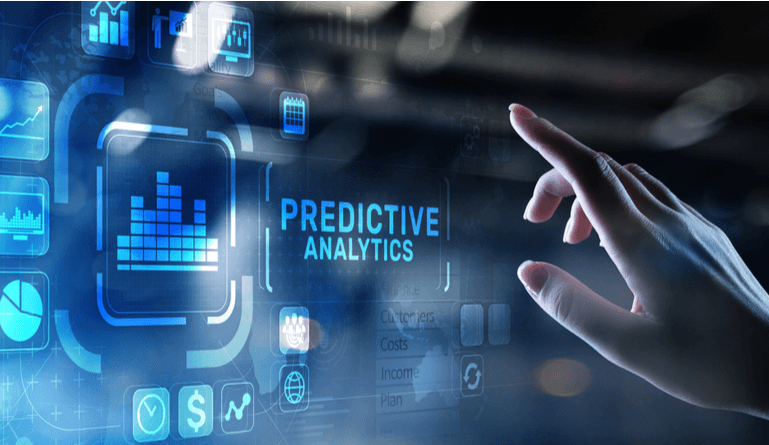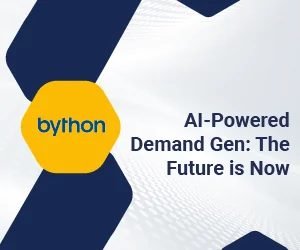Predictive analytics is a combination of multiple statistical technologies and methodologies that covers data mining, predictive modeling as well as machine learning. This methodology conducts an in-depth analysis of present and historical data to make future predictions. The objective of predictive analytics(1) is not just limited to knowing what happened, but also to get a better evaluation of what can possibly happen in the future.
How Does Predictive Analytics Work?
As we know that the goal of predictive analytics is to predict future patterns and trends by evaluating the current and past records. There are organizations that have developed proprietary technologies around predictive analytics, which are said to be industry-specific. However, other organizations are dependent on third-party tools for their predictive analytics competency.
In either case, there is a systematic flow, in which you can execute predictive analytics projects. This is a seven-step process.
-
Project Definition
A very critical aspect of defining the project is to understand the ultimate objective of executing a predictive analytics project. There should be clarity on questions such as, what are you trying to model? Do you know the type of events or outcomes that you want to predict? Seeking answers to these questions will help organizations to get the right value-driver from this initiative.
-
Collection of Data
The efficacy of predictive analytics is completely dependent upon one pre-requisite – data. However, you need a large volume of data for slicing and dicing, to run necessary algorithms. In case, there is already a defined process to collect data, then there should be no challenge in accumulating them.
On the other hand, those organizations that do not have such mechanisms will have to first set up a data aggregation tool to help them collect raw data from multiple sources. In fact, data collection should be a part of your project definition for companies that do not have data.
-
Data Cleaning
Before you start your analysis of the data, it is important for the organization to clean and sanitize the data. The cleaning process involves the consolidation of data from multiple sources into a single comprehensive database, with consistency across formatting. This will ensure that the analysis using the predictive analytics tool is efficient.
-
Deep Data Analysis
This process is the start of the analysis of data. The objective in this step is to get visibility on patterns and trends in the data and leverage that information to create predictive models that can depict future actions. There are predominantly two methods to conduct such deep data analysis
- Statistical Regression Methods
- Machine Learning Techniques
-
Constructing Model
Once the cleansed data is analyzed in detail, organizations can start building a predictive model for anticipating future events. There will be multiple models generated by the software tool, hence, the organization has to select the best (in terms of accuracy) to predict events.
-
Deployment
After the models are created and finalized, then the selected model must be implemented for daily use. Everyday use is again linked to the project definition in step1. For instance, if the model is used to predict data security events by analyzing computer event logs, then this model must be put into use for monitoring real-time activities and come up with reports of possible loopholes to avoid any security breaches. There is a possibility of organizations resolving some issues proactively – thanks to the selected model.
-
Monitoring
Once the models are deployed, then it is imperative that this model is consistently monitored, and necessary course corrections are done. Over-dependence on this model without monitoring can prove to be disastrous.
Why is Predictive Analytics Important?
A fundamental reason why organizations look up to predictive analytics is the fact that this mechanism solves complex problems and discovers new opportunities. Let us look at some of the key reasons why predictive analytics is significant.
-
Detecting fraud
If we combine multiple models, it can help in the detection of any untoward patterns and avoid any criminal work. As we see growing concern around cybersecurity, high-performance predictive analytics tools can analyze the network on a real-time basis to check for any fraud causing abnormalities.
-
Optimizing Marketing Campaigns
Organizations use it to understand customer’s buying behavior, thereby creating upselling and cross-selling opportunities.
-
Improvement of Operations
Another used case that outlines the importance, is to forecast inventory and also manage resources. For instance, airline companies uses to set the prices of their tickets. Hotels can predict their anticipated guests to identify maximum occupancy thereby resulting in increased revenue.
-
Risk Reduction
A classic example of risk reduction is the generation of credit scores. This allows lenders to check the creditworthiness of a customer to help them identify the risk involved in lending money to borrowers.
( Also Read: Top 3 Examples of Predictive Analytics in HR )
Advantages of Predictive Analytics
Having implemented predictive analytics brings out a significant value proposition for organizations. Here are some of the key benefits that organizations can get.
- Achieve significant competitive advantage over competitors.
- Discover new opportunities.
- Optimize performance & deliverable.
- Gather deeper insights on customers.
- Enable cost and risk reduction.
- Proactive identification and resolution of problems.
- Achieve customer expectations.
- Enhanced collaboration.
Challenges to Predictive Analytics
Just like any data analytics model, predictive analytics can be accurate only if the data associated with this model is accurate. If organizations just collect random data from irrelevant sources, it can just create some result, which will hardly have any value to the business.
As we see the continuous evolution of artificial intelligence and machine learning, the process of data cleaning will undergo automation.
A key aspect to understand is that inaccurate analytics is due to inaccurate data. Predictive models that are built with such inaccurate models will create more confusion resulting in chaos in the business. The models need to be constantly monitored and tweaked to ensure that the results are in line with the objective defined. If not, then this can only result in imprecise results.
Additionally, organizations can face some more challenges such as:
- Having the right set of expertise in the staff to understand and work on such models.
- Difficulty among some predictive analytics tools to scale up.
- Unavailability of right insights to act for future trends.
Examples of Predictive Analytics Across Sectors
It is no longer limited to large enterprises, but today even mid-sized enterprises are also implementing predictive analytics.
-
Retail Sector
Retail companies use to forecast the management & maintenance of inventory. They also use it for tracking shipping schedules. Companies also use predictive analytics models to design store layout, which can accommodate maximum products thereby increasing sales.
-
Healthcare Sector
In the healthcare segment, a classic used case is its implementation in medical diagnosis. The industry has deployed this model to forecast any negative health hazard among patients who are at a higher medical risk. This can result in the early detection of diseases in patients who are not showing any symptoms.
-
Manufacturing Sector
A key task in the manufacturing sector is predictive maintenance to ensure the machinery is intact. Sensors attached to these machines, can push data to this analytics tool and identify any risky activity and also forecast the wear and tear of these machines.
-
Cybersecurity Sector
For cybersecurity companies, a critical element is identifying security breaches. It helps in getting early warning alerts for any kind of data security breach.
-
Human Resources Sector
The HR department can use tools to predict the top performers in the organization and also envisage the employees that can potentially leave.
Difference between Predictive Analytics & Prescriptive Analytics
| Predictive Analytics | Prescriptive Analytics |
|---|---|
| Detects the problems well in advance | Not only detects the problems but also suggests steps to solve |
| Forecasts what is likely to happen | Totally based no data |
| Works for certain aspects of a business | Applicable for the entire business |
| Outputs are non-actionable | Captures all inputs, variable, and outputs |
| It is based on hypotheses, based on some preconfigured scenarios. | Not restricted by any static rules or conditions |








